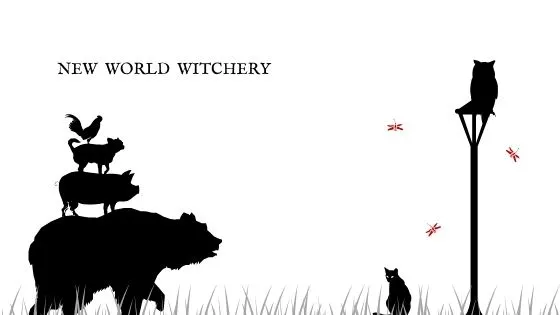Today we’re rounding up another group of links that readers of this blog might find interesting or enjoyable and sending them out into the world. I’ve not had as much time to write for the blog or record for the show as I’m knee-deep in the process of thesis-writing and researching places for PhD research, but I do continually find myself reading new posts, articles, and information that pertain to the various branches of folk lore, folk magic, and folk belief. Here’s a brief list that will hopefully give you some things to peruse while you’re waiting upon tenterhooks for the next riveting New World Witchery post or show.
I’ll start today in the realm of Pennsylvania-Dutch magic. There’s a brand new edition of the pow-wow classic The Long Lost Friend available from Llewellyn, edited and annotated by Daniel Harms. Hohman’s text is presented here in several formats, including the original 1820 edition (with the German language version) and in an expanded 1856 English translation. Many of the spells are pulled from a third edition, the 1837 “Skippacksville” version. It’s a surprisingly stuffed text with a tremendous amount of folkloric value, and if you have any interest in American folk magic at all I highly recommend getting it.
In the same vein, if you enjoy braucherei, hexerei, and pow-wow, but want to explore it in a Pagan/Heathen context, I cannot recommend enough that you hurry over to Urglaawe. This is Rob Schreiwer & Co.’s site which helps collect—in English and PA-German—the vast stores of Germanic magic which exist on both sides of the Atlantic (with a heavy emphasis on the beliefs and practices of the Pennsylvania-Dutch in America). Schreiwer will be part of an upcoming episode of the show, and he’s a brilliant mind with a tremendous amount of information in his head, so please take a look at the work he’s doing. If you’re a schuler of things Deitsch, you won’t regret it.
In a final nod to the Germanic cultures of America, I was recently introduced by SilverShadow and Dr. Hob to the fascinating phenomenon of courting candles. These little spiral-shaped candle holders would be lit and adjusted to provide light for suitors to visit their sweethearts. When the candle burned out, the beau had to leave. If a father liked a suitor, he’d adjust the candle to provide more time in the light; if not, he’d move the little key to make the candle burn out more quickly. I’m always fascinated by things like this, as I can see plenty of ways they can be used magically in addition to their more mundane applications.
Speaking of Dr. Hob, he’s been very active on his own website lately, Pennies for the Boneyard, with phenomenal posts on topics ranging from his relationship with Christianity and conjure work to a review of ConjureMan Ali’s Santisma Muerte book to a rather flattering and kindly review of our own cartomancy guide. If you’ve not come across his blog before, give it a visit and tell him we sent you.
You should also check out the fun and informative show he and SilverShadow are doing together, called Lamplighter Blues.
I’m reading Midnight in the Garden of Good and Evil for the first time as part of a book club, and if you haven’t read it, it’s worth the time. The story gives you a wonderful portrait of the strange, beautiful, and eerie city of Savannah, Georgia, as well as a specific murder trial that occurred there in the 1980s. A major portion of the story takes place in cemeteries, and a conjure woman whom the author names “Minerva” becomes somewhat crucial in the narrative. This is essentially a non-fiction book, though, and Minerva is actually Valerie Fennel Boles, widow to one of the Dr. Buzzards of Beaufort, South Carolina. Boles carried on Buzzard’s conjure work until her death in 2009, and the portrayals of her practice in the book—despite the appellate of “voodoo” which author John Berendt uses to describe what she does—are incredibly vivid and authentic. You can read more about Dr. Buzzard in Jack Montgomery’s American Shamans, too, which we’ve mentioned here before.
If you haven’t seen it yet, Sarah Lawless’ latest venture has gone live. Go take a peek at the Poisoner’s Apothecary, and check out some of the projects she’s working on. I’m particularly excited about the range of pipes she’s carving for smoking rituals.
I think that will just about do it for today. If you enjoy these links, let them know who sent you and let us know what you like best in the comments section. And feel free to share what you’re reading/writing/learning these days, too!
Thanks for reading!
-Cory



